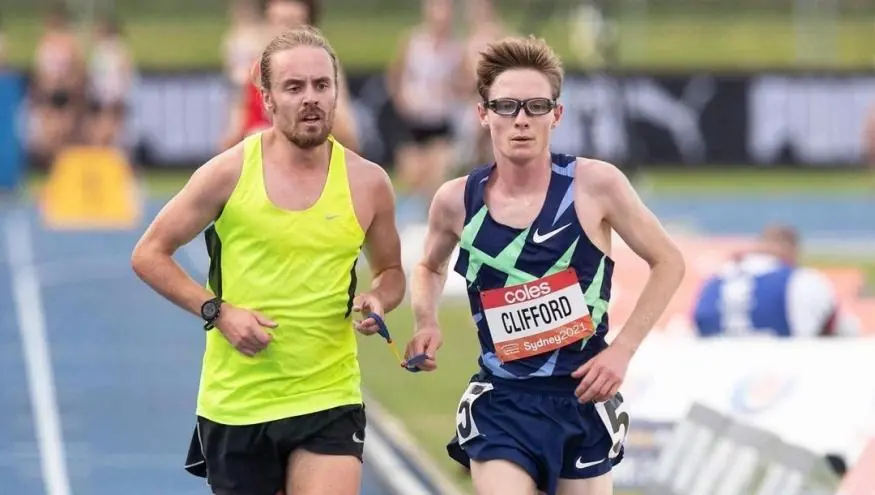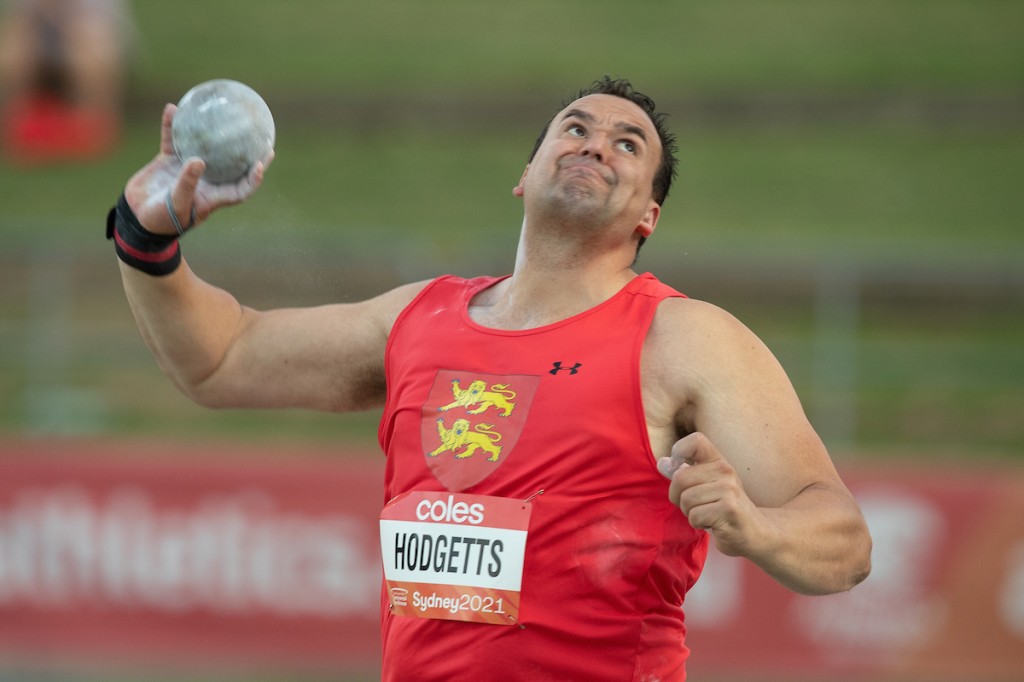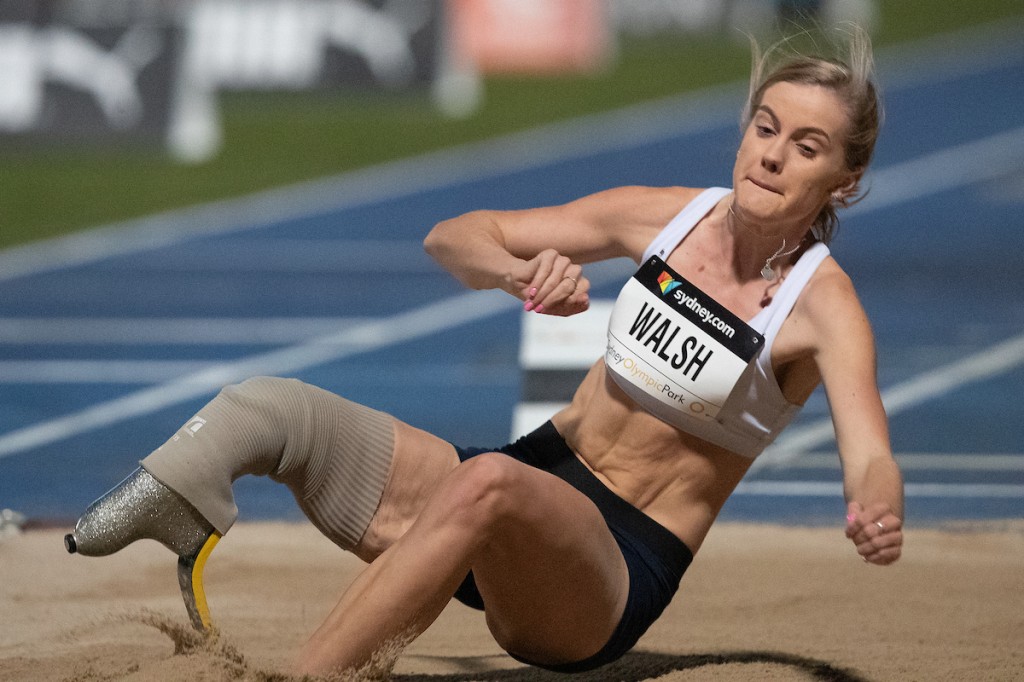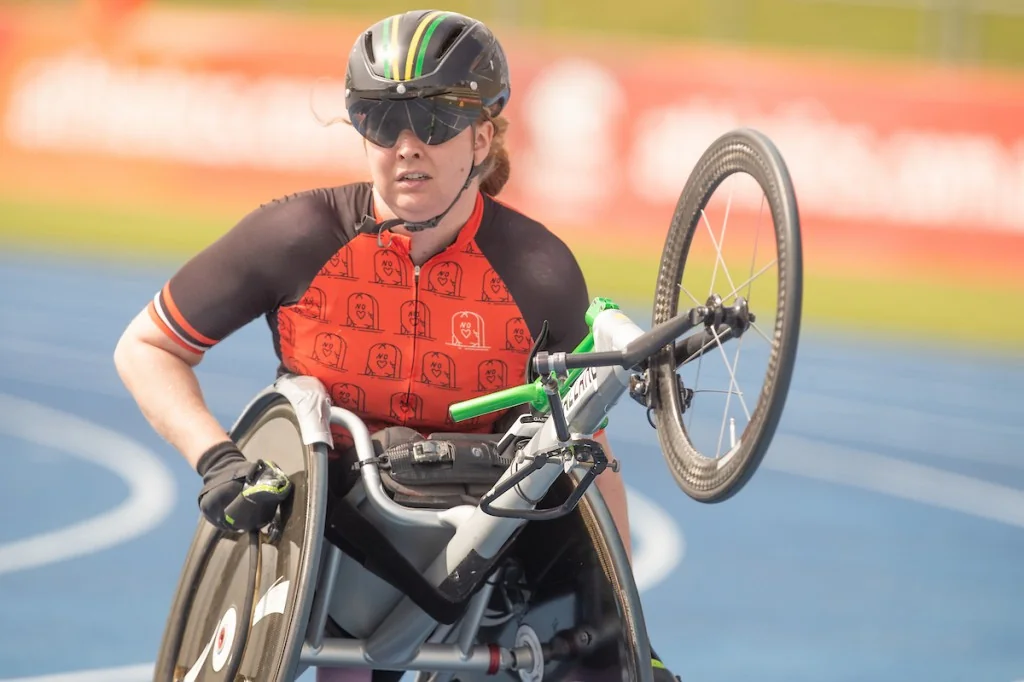In less than two weeks, the Australian Para-athletics team will set Tokyo Olympic Stadium alight at one of the world’s premier sporting events – the Paralympic Games.
If there is one major difference between the Olympics and the Paralympics it is classification, which is the system for grouping athletes, so that individuals of equivalent impairment types can compete together on an even playing field. This is comparable to other practices used in sport to create fairness, such as grouping athletes by weight class or gender.
In Athletics, sport classes consist of a T or F, followed by a number. T stands for track, indicating all running, wheelchair track and road events, and all jumping events. F stands for Field, indicating all throwing events in the field. The number indicates the type of impairment and how it affects the athlete’s body.

Australia will be represented by athletes with vision impairments in the in the T12 and T13 classes.
T12 – Athletes who have very low vision in both eyes either in how far they can see (visual acuity) or how wide they can see (visual field). Athletes have the option to use a guide. Our two T12 athletes are dual world champion Jaryd Clifford (Philo Saunders) and rising 1500m star Sam Harding (Philo Saunders).
T13 – Athletes who have low vision in both eyes, but more vision than T12. Vision is affected either in how far they can see (visual acuity) or how wide they can see. Athletes are unable to use a guide. Look out for Chad Perris (Iryna Dvoskina) in the 100m T13.

T/F20 – Athletes with an intellectual impairment, who may find it more difficult to plan event tactics. There are only a limited number of events for athletes with intellectual disabilities at the Paralympics. In Para-athletes, this consists of the 400m, 1500m, long jump and shot put. London 2012 Todd Hodgetts (Scott Martin) will step up to compete in the shot put T20, while Nicholas Hum (John Boas) will contest his third Paralympics in the F20 long jump.

Athletes with a physical impairment make up the majority of athletes at the Paralympics, and in Para-athletics, their impairments are split up between impairment types and further subdivided.
The 30s:
The 30s classes are for athletes with coordination impairments from conditions such as cerebral palsy or acquired brain injuries. Athletes in classes 32-34 compete in a wheelchair on the track or use a throwing frame in the field. T/F35-38 athletes run on the track, compete in jumps and compete standing in the field.
T/f32 – Athletes with the most significant coordination impairments, whose whole body is affected. Athletes throw a club instead of a discus and hold a pole to assist their balance during throws. In Tokyo, F32 athletes compete in Club Throw and Shot Put. Rosemary Little (Karyne Di Marco and Breanne Clement) will represent Australia in the seated shot put.
T/F33 – Athletes with coordination impairments whose whole body is affected but have more control in one arm than the other They may have an asymmentrical push during wheelchair track events and use their better arm to throw. Look out for Paralympic debutant Maria Strong (John Eden) in the Seated shot put F33.
T/F34 – Athletes with coordination impairments who throw seated or use a wheelchair on the track whose disability is mostly in their legs. They have good strength in their torso and arms to propel their chair on the track or throw the discus, shot put or javelin. Rheed McCracken (Andrew Dawes) will be chasing an elusive gold medal in the 100m, after winning silver at the last two Paralympic Games, and Robyn Lambird (Blanche Herbert) will make her debut in the 100m too.
T/F35 – Athletes who compete standing, and have moderate coordination impairment in both legs. These athletes usually have short running strides and decreased leg power in the throws. Four-time world champion Isis Holt (Paul Pearce) will make her mark at her second Paralympic Games in Tokyo in the 100m and 200m events for T35 athletes.
T/F36 – Athletes who compete standing and have balance and coordination problems affecting their whole body. Athletes might find it difficult to balance at the start line in track or keep within the throws sector due to poor balance. World record holder and Paralympic gold medallist James Turner (Iryna Dvoskina) will toe the line in the 100m and 400m T36 events.
T/F37 – Athletes who compete standing who have a coordination impairment down one side of their body. They have an asymmetry of running stride and arm and leg power in the throws. Canadian-based Guy Henly (Kim Cousins) will wear the green and gold once again for the Discus F37.
T/F38 – Athletes who have the mildest forms of impairment of those in class 35-37 are grouped in class 38. They have mild asymmetries, with good power, speed and control. A bevvy of Australians will compete under the T/F38 class in events. In the field events look out for Jayden Sawyer (Mike Barber) and world champion Corey Anderson (Des Davis) in the javelin throw, and Samantha Schmidt (Ralph Newton) who will also compete in the Discus throw F38. Our T38 sprinters are five-time Paralympic gold medallist Evan O'Hanlon (100m, Iryna Dvoskina), Ella Pardy (100m, Danny Kevan) and Rhiannon Clarke (100m & 400m, Danny Kevan), while debutant Daniel Bounty (Peter Bock) and Australian record holder Deon Kenzie (Philo Saunders) will represent in the 1500m. Look out for Ari Gesini (Sebastian Kuzminski) in the 100m and long jump too.
The 40s:
The 40s classes are for athletes with short stature, loss of limbs muscle weakness or restricted joints in their arms or legs who compete standing. Athletes in the 40s classes do not use prosthetics.
T/F44 – Athletes with mild limb loss, muscle weakness or restrictions in the legs who don’t use any prosthetics. After winning medals at the 2017 and 2019 world championships, Sarah Edmiston (Paul Edmiston) will make her Paralympic debut in the discus event, as will first-time Australian representative Michal Burian (Nick Baltas) in the javelin.
T/F46 – Athletes with moderate limb loss, muscle weakness or restrictions that affect one arm. Reigning world champion and world record holder Michael Roeger (Philo Saunders) will chase down gold in the men’s T46 marathon.
T/F47 – Athletes with mild impairment in one arm. T47 athletes combine with T46 athletes and are only eligible to compete in 100-400m events and jumps. Look out for Paralympic debutant and Australian record holder Alissa Jordaan (Sebastian Kuzminski) in the 400m and the youngest athlete on the Australian Para-athletics team Jaydon Page (Sebastian Kuzminski) in the 100m.
The 50s:

The 50s classes are for athletes with muscle weakness, limb loss or join restrictions who race wheelchairs or use a throwing frame.
T/F52 – Athletes who have little or no movement in their legs or torso, who have good shoulder strength with some weakness in wrists and fingers. Throwers with good shoulders and elbow strength, with some weakness in wrists and fingers, and little or no movement in legs or torso. Athletes use a pole to help them balance. Sam McIntosh (Fred Periac) returns to the Paralympic track to compete in the 100m T52.
T/F53 – Athletes with strong arm movement who have weakness in their torso and legs. These athletes generate power from their arms. They will stop pushing to control the compensator, the decide which controls the steering. Throwers with good shoulder and elbow and wrist strength, with weaknesses in fingers only, and little to no movement in their legs or torso. Some of our best ever wheelchair racers, Madison de Rozario (Louise Sauvage) and Angela Ballard (Fred Periac) will line up again in Tokyo. De Rozario will compete in all events from the 800m through to the marathon, while Ballard will contest the 400m and 100m events.
T/F54 – Athletes with strong arm and torso movement, who have an impairment in their legs. Athletes have fast acceleration, can maintain top speed and maintain their pushing speed while steering. Throwers with good arm strength and little to no movement in their torso or legs. Athletes have no sitting balance and hold a pole on their frame while throwing. Our T54 athletes are six-time Paralympian Christie Dawes (Andrew Dawes) in the marathon, and Eliza Ault-Connell (Fred Periac) who makes her return to the Paralympics after 17 years away from the pinnacle event, as well as Paralympic debutant Luke Bailey (Fred Periac) and Sam Carter (Fred Periac).
The 60s:
A new set of classes for Tokyo 2020, the 60s classes are for athletes who use prosthetics on either one or two legs to compete.
T/F61 – Athletes have an absence of both legs above the knees and use prosthetic running blades. Paralympic gold medallist Vanessa Low (Iryna Dvoskina) will compete in the combined long jump T61-63, wearing Australian colours for the first time, after representing her native Germany at both London and Rio.
T/F63 – Athletes have an absence of one leg above the knee and use a prosthetic leg for competition. The prosthetic has an inbuilt knee joint. Scott Reardon (Iryna Dvoskina) will compete in the 100m T63, after claiming gold at the 2016 Rio Paralympics.
T/F64 – Athletes have an absence of one leg below the knee and use a prosthetic running leg. Sarah Walsh (Matt Beckenham) will jump for gold after claiming bronze at the 2019 World Championships.
By Sascha Ryner, Athletics Australia with information provided by the International Paralympic Committee.
Posted: 12/8/2021

